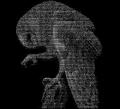
DMT-Nexus member

Posts: 256 Joined: 03-Jul-2012 Last visit: 29-Mar-2025 Location: State of Ataxia
|
https://gizmodo.com/scie...-happened-was-1829191638That's a darn lucky octopus... "The brain is a reducing valve that restricts consciousness" - A Huxley
"Do not go where the path may lead, go instead where there is no path and leave a trail" – Ralph Waldo Emerson…
"Whatever you study you also change" - Heisenberg Uncertainty principle
|
|
|
|
|

Dreamoar

Posts: 4711 Joined: 10-Sep-2009 Last visit: 06-Nov-2025 Location: Rocky mountain high
|
An interesting study, but highly flawed. The experiment needs to be repeated with a funktion one blasting Tipper and a few hundred glowsticks in the tank.  full article is attached: Edsinger, Eric and Dölen, Gül (2018 ) A conserved role for serotonergic neurotransmission in mediating social behavior in octopus. Current Biology, DOI: 10.1016/j.cub.2018.07.061
|
|
|

Live the Life you Love
Posts: 132 Joined: 09-Jun-2018 Last visit: 12-Jun-2019
|
I think there are flaws in the assumption that we have a centralized nervous system and point to recent advancements that both the gut (often called the second brain) and the heart (incorrectly left out of the brain numbering system:grin  send more data to the brain than the brain sends to them which sounds decentralized to me. Second thing that rubs me wrong is saying the octopus has no reward center. Rather presumptuous of us to think we know everything there is to know and what each part of this decentralized nervous system does. I realize that no one book, one person, or even one ideology will have all the answers. I believe my job is to remain open yet discriminating. My intuition helps me discern truth, and wisdom helps me identify malicious intentions.
|
|
|

DMT-Nexus member

Posts: 256 Joined: 03-Jul-2012 Last visit: 29-Mar-2025 Location: State of Ataxia
|
dreamer042 wrote:The experiment needs to be repeated with a funktion one blasting Tipper and a few hundred glowsticks in the tank.  I'd pay big money to see a raving octopus with a glow stick in each tentacle... XD "The brain is a reducing valve that restricts consciousness" - A Huxley
"Do not go where the path may lead, go instead where there is no path and leave a trail" – Ralph Waldo Emerson…
"Whatever you study you also change" - Heisenberg Uncertainty principle
|
|
|

DMT-Nexus member

Posts: 14191 Joined: 19-Feb-2008 Last visit: 22-Nov-2025 Location: Jungle
|
Can anyone help me out finding any of these publications: Cactus alkaloids. XXXVI. Mescaline and related compounds from Trichocereus peruvianus.Serrano, C.A.,2008.Avances en la fitogeografía química del género Trichocereus en el sur del Perú.Quepo 22,29–34. Gonzalez Huerta,I.,1960.Identificación de la mescalina contenida en el Trichocereus pachanoi (San Pedro).RevistadelViernesMédico[Lima]11,133–137.. Agurell, S.,1969a.Identificatio nof alkaloid intermediates by gaschromatography– mass spectrometry.I.Potential mescaline precursors in Trichocereus species. Lloydia 32,40–45. Poisson, J.,1960.Présence de mescaline dans une Cactacée péruvienne.Annales Pharmaceutiques Franc¸ aises18,764–765. Bruhn, J.G.,Lundström,J.,1976.A student’s experiment in pharmacognosy: biosyn- thesis of mescaline in thecactus Trichocereus pachanoi. American Journal of Pharmaceutical Education 40,159–160. Reyna Pinedo,V.,Flores Garcés,J.,2001.El uso del “San Pedro”(Echinopsis pachanoi) en medicina tradicional peruana.Quepo 15,28–37.
|
|
|

DMT-Nexus member
Posts: 71 Joined: 18-Nov-2010 Last visit: 26-Feb-2024 Location: Frogeater Land
|
endlessness wrote:Agurell, S.,1969a.Identification of alkaloid intermediates by gaschromatography–
mass spectrometry.I.Potential mescaline precursors in Trichocereus species.
Lloydia 32,40–45. Here you have.
|
|
|

DMT-Nexus member

Posts: 14191 Joined: 19-Feb-2008 Last visit: 22-Nov-2025 Location: Jungle
|
|
|
|

DMT-Nexus member

Posts: 764 Joined: 18-Jan-2008 Last visit: 20-Mar-2023
|
Psychoplastogens: A Promising Class of Plasticity-Promoting Neurotherapeutics. David E OlsonJournal of Experimental Neuroscience Volume 12: 1–4, Aug.2018 DOI: 10.1177/1179069518800508 AbstractNeural plasticity-the ability to change and adapt in response to stimuli is an essential aspect of healthy brain function and, in principle, can be harnessed to promote recovery from a wide variety of brain disorders. Many neuropsychiatric diseases including mood, anxiety, and substance use disorders arise from an inability to weaken and/or strengthen pathologic and beneficial circuits, respectively, ultimately leading to maladaptive behavioral responses. Thus, compounds capable of facilitating the structural and functional reorganization of neural circuits to produce positive behavioral effects have broad therapeutic potential. Several known drugs and experimental therapeutics have been shown to promote plasticity, but most rely on indirect mechanisms and are slow-acting. Here, I describe psychoplastogens a relatively new class of fast-acting therapeutics, capable of rapidly promoting structural and functional neural plasticity. Psychoplastogenic compounds include psychedelics, ketamine, and several other recently discovered fast-acting antidepressants. Their use in psychiatry represents a paradigm shift in our approach to treating brain disorders as we focus less on rectifying "chemical imbalances" and place more emphasis on achieving selective modulation of neural circuits. Do not seek the truth, just drop your opinions.
|
|
|

DMT-Nexus member

Posts: 764 Joined: 18-Jan-2008 Last visit: 20-Mar-2023
|
Dark Classics in Chemical Neuroscience: N,N‑Dimethyltryptamine (DMT)Lindsay P. Cameron & David E. OlsonACS Chem Neurosci. 2018 Oct 17;9(10):2344-2357. doi: 10.1021/acschemneuro.8b00101 AbstractThough relatively obscure, N,N-dimethyltryptamine (DMT) is an important molecule in psychopharmacology as it is the archetype for all indole-containing serotonergic psychedelics. Its structure can be found embedded within those of better-known molecules such as lysergic acid diethylamide (LSD) and psilocybin. Unlike the latter two compounds, DMT is ubiquitous, being produced by a wide variety of plant and animal species. It is one of the principal psychoactive components of ayahuasca, a tisane made from various plant sources that has been used for centuries. Furthermore, DMT is one of the few psychedelic compounds produced endogenously by mammals, and its biological function in human physiology remains a mystery. In this review, we cover the synthesis of DMT as well as its pharmacology, metabolism, adverse effects, and potential use in medicine. Finally, we discuss the history of DMT in chemical neuroscience and why this underappreciated molecule is so important to the field of psychedelic science. Do not seek the truth, just drop your opinions.
|
|
|

DMT-Nexus member
Posts: 77 Joined: 24-Sep-2017 Last visit: 23-Jun-2023
|
New psychoactive substances in oral fluid of drivers around a music festival in south-west France in 2017Richeval C, et al. Forensic Sci Int. 2019 Feb 26;297:265-269. doi: 10.1016/j.forsciint.2019.02.029 Abstract Driving under the influence of drugs (DUID) is a worldwide problem with potentially major forensic and life-threatening consequences. Although it is obvious that new psychoactive substances (NPS) could lead to impaireddriving, the prevalence of NPS use in a DUID context is unknown as the applied roadside screening tests for drugs of abuse (DOA) are not adapted for NPS detection. This works aims to tested oral fluid (OF) specimens for NPS in French drivers circulating around two music festivals (Artsenik 2017 and Garorock 2017) in order to assess the prevalence of consumption and the kind of used NPS in this particular population. OF samples consisted in dried saliva spots obtained from used Drugwipe-5S® tests (after a positive or negative roadside screening test for DOA). These OF were analyzed using a liquid chromatography coupled with tandem mass spectrometry or high-resolution mass spectrometry method. NPS were detected in 17 out of the 229 OF collected specimens (7.4%). Eleven various NPS were identified (number of identification): 5F-AKB48 (2), MAM2201 (1), JWH122 (1), 4F-PVP (1), 3- or 4-MMC (2), fluoromethamphetamine (1), ketamine (3), MXE (3), methoxyketamine (1), 6-APB (2) and 25C-NBOMe (1). There is an apparent effect of the music festival proximity on the prevalence of NPS in OF from this controlled driver population compared to that of 140 controlled drivers from Northern France analyzed in the same period (7.4% versus 3%). The variety of used NPS appears to be increasing (e.g. large proportion of cyclohexanones). In addition, 5% of drivers initially roadside-tested negative for DOA were in fact driving after NPS use in this specific population. From a forensic perspective, these results confirm the reality of driving after NPS use in French drivers, notably in those driving to or from a music festival.
|
|
|

DMT-Nexus member
Posts: 77 Joined: 24-Sep-2017 Last visit: 23-Jun-2023
|
General Principles and Strategies for Saslting-Out Informed by the Hofmeister SeriesHyde, Alan M., et al Org. Process Res. Dev., 2017, 21 (9), pp 1355–1370 DOI: 10.1021/acs.oprd.7b00197 Abstract: Overarching principles for salting-out extraction are long-established but poorly disseminated. We highlight the opportunity for more widespread application of this technique using the Hofmeister series as a foundational basis for choosing the right salt. The power of this approach is exemplified by the aqueous workup of a highly water-soluble nucleoside in which the use of sodium sulfate allowed for high recoveries without relying on back extraction.
|
|
|
DMT-Nexus member
  
Posts: 196 Joined: 15-Jan-2013 Last visit: 09-Feb-2024 Location: paradise
|
https://www.nature.com/a...m6RitdBn2vSk7LR_O_uh7bLcAvailable via citationsy if lacking direct access options
|
|
|

Dreamoar

Posts: 4711 Joined: 10-Sep-2009 Last visit: 06-Nov-2025 Location: Rocky mountain high
|
Lemoine, Patrick, et al. "Prolonged-release melatonin for insomnia–an open-label long-term study of efficacy, safety, and withdrawal." Therapeutics and clinical risk management 7 (2011): 301.
|
|
|

Boundary condition

Posts: 8617 Joined: 30-Aug-2008 Last visit: 29-Nov-2025 Location: square root of minus one
|
Rafael G. Dos Santos - The pharmacology of ayahuasca: a review. Brasília Med 2010;47(2):188-195 https://www.researchgate.net/publication/216385567 “There is a way of manipulating matter and energy so as to produce what modern scientists call 'a field of force'. The field acts on the observer and puts him in a privileged position vis-à-vis the universe. From this position he has access to the realities which are ordinarily hidden from us by time and space, matter and energy. This is what we call the Great Work." ― Jacques Bergier, quoting Fulcanelli
|
|
|

DMT-Nexus member

Posts: 764 Joined: 18-Jan-2008 Last visit: 20-Mar-2023
|
5-Methoxy-N,N-dimethyltryptamine: An Ego-Dissolving Endogenous Neurochemical Catalyst of CreativityChristopher B. Germann Received: 14 June 2019 /Revised: 10 August 2019 /Accepted: 13 August 2019 DOI: 10.1007/s41470-019-00063-y # Neuroscientia 2019Abstract5-Methoxy-N,N-dimethyltryptamine (acronymized as 5-MeO-DMT) is sui generis among the numerous naturally occurring psychoactive substances due to its unparalleled ego-dissolving effects which can culminate in a state of nondual consciousness that is phenomenologically similar to transformative peak experiences described in various ancient contemplative traditions (e.g., Advaita Vedānta, Mahāyāna Buddhism, inter alia). The enigmatic molecule is endogenous to the human brain and has profound psychological effects which are hitherto only very poorly understood due to the absence of scientifically controlled human experimental trials. Its exact neuronal receptor binding profile is a matter of ongoing research; however, empirical evidence indicates that its remarkable psychoactivity is partially mediated via agonism of the 5-HT1A/2A (serotonin) receptor subtypes. Anthropological/ethnopharmacological evidence indicates that various cultures utilized 5-MeO-DMT containing plants for medicinal, psychological, and spiritual purposes for millennia. We propose that this naturally occurring serotonergic compound could be fruitfully utilized as a neurochemical research tool with the potential to significantly advance our understanding of the psychological and neuronal processes which underpin cognition and creativity (e.g., downregulation of the default mode network, increased global functional connectivity, neuroplasticity, σ1 receptor interactions, etc.). An eclectic interdisciplinary perspective is adopted, and we present converging evidence from a plurality of sources in support of our conjecture. Specifically, we argue that 5-MeO-DMT has significant neuropsychopharmacological potential due to its incommensurable capacity to completely disintegrate self-referential cognitive/neuronal processes (viz., ego death). The importance of unbiased systematic scientific research on naturally occurring endogenous psychoactive compounds is discussed from a Jamesian radical empiricism perspective, and potential scenarios of abuse are addressed, particularly in the context of neuroethics, cybernetic manipulation, and military research on torture. Do not seek the truth, just drop your opinions.
|
|
|

DMT-Nexus member
Posts: 18 Joined: 15-Aug-2020 Last visit: 28-Jan-2021 Location: unknown
|
I found an absolutely fascinating paper that tries to find a unified theoretical framework for explaining the psychedelic experience: https://pharmrev.aspetjo...RPXn806cPKO7Zsas2EsJJhDsAnd there is a more accessible article about it here: https://slatestarcodex.c...-and-the-anarchic-brain/It's really interesting. Essentially they model the brain as a bayesian inference machine, which is constantly making predictions about the world filtered through ones prior beliefs. Their central argument is that all the action of psychedelics can be explained by them relaxing the users prior beliefs about the world. I've read similar stuff before on this topic, but these guys tie it all together quite nicely, and they also tie it into other mental states/illnesses like autism and schizophrenia. They have some tangential supporting evidence, but it's still mostly just theory. Fascinating though.
|
|
|

Dreamoar

Posts: 4711 Joined: 10-Sep-2009 Last visit: 06-Nov-2025 Location: Rocky mountain high
|
Head to head comparison of psilocybin and SSRICarhart-Harris, Robin, et al. "Trial of Psilocybin versus Escitalopram for Depression." New England Journal of Medicine 384.15 (2021): 1402-1411. Quote: Abstract BACKGROUND Psilocybin may have antidepressant properties, but direct comparisons between psilocybin and established treatments for depression are lacking. METHODS In a phase 2, double-blind, randomized, controlled trial involving patients with long-standing, moderate-to-severe major depressive disorder, we compared psilocybin with escitalopram, a selective serotonin-reuptake inhibitor, over a 6-week period. Patients were assigned in a 1:1 ratio to receive two separate doses of 25 mg of psilocybin 3 weeks apart plus 6 weeks of daily placebo (psilocybin group) or two separate doses of 1 mg of psilocybin 3 weeks apart plus 6 weeks of daily oral escitalopram (escitalopram group); all the patients received psychological support. The primary outcome was the change from baseline in the score on the 16-item Quick Inventory of Depressive Symptomatology–Self-Report (QIDS-SR-16; scores range from 0 to 27, with higher scores indicating greater depression) at week 6. There were 16 secondary outcomes, including QIDS-SR-16 response (defined as a reduction in score of >50%) and QIDS-SR-16 remission (defined as a score of ≤5) at week 6. RESULTS A total of 59 patients were enrolled; 30 were assigned to the psilocybin group and 29 to the escitalopram group. The mean scores on the QIDS-SR-16 at baseline were 14.5 in the psilocybin group and 16.4 in the escitalopram group. The mean (±SE) changes in the scores from baseline to week 6 were −8.0±1.0 points in the psilocybin group and −6.0±1.0 in the escitalopram group, for a between-group difference of 2.0 points (95% confidence interval [CI], −5.0 to 0.9) (P=0.17). A QIDS-SR-16 response occurred in 70% of the patients in the psilocybin group and in 48% of those in the escitalopram group, for a between-group difference of 22 percentage points (95% CI, −3 to 4  ; QIDS-SR-16 remission occurred in 57% and 28%, respectively, for a between-group difference of 28 percentage points (95% CI, 2 to 54). Other secondary outcomes generally favored psilocybin over escitalopram, but the analyses were not corrected for multiple comparisons. The incidence of adverse events was similar in the trial groups. CONCLUSIONS On the basis of the change in depression scores on the QIDS-SR-16 at week 6, this trial did not show a significant difference in antidepressant effects between psilocybin and escitalopram in a selected group of patients. Secondary outcomes generally favored psilocybin over escitalopram, but the analyses of these outcomes lacked correction for multiple comparisons. Larger and longer trials are required to compare psilocybin with established antidepressants. (Funded by the Alexander Mosley Charitable Trust and Imperial College London’s Centre for Psychedelic Research; ClinicalTrials.gov number, NCT03429075. opens in new tab.) https://www.nejm.org/doi...ll/10.1056/NEJMoa2032994
|
|
|

Dreamoar

Posts: 4711 Joined: 10-Sep-2009 Last visit: 06-Nov-2025 Location: Rocky mountain high
|
Chilton, W. S., Bigwood, J., & Jensen, R. E. (1979). Psilocin, Bufotenine and Serotonin: Historical and Biosynthetic Observations. Journal of Psychedelic Drugs, 11(1-2), 61–69. doi:10.1080/02791072.1979.10472093
|
|
|

Boundary condition

Posts: 8617 Joined: 30-Aug-2008 Last visit: 29-Nov-2025 Location: square root of minus one
|
Karaki S, Becamel C, Murat S, Mannoury la Cour C, Millan MJ, Prézeau L, Bockaert J, Marin P, Vandermoere F. Quantitative phosphoproteomics unravels biased phosphorylation of serotonin 2A receptor at Ser280 by hallucinogenic versus nonhallucinogenic agonists. Mol Cell Proteomics. 2014 May;13(5):1273-85. doi: 10.1074/mcp.M113.036558. Epub 2014 Mar 17. PMID: 24637012; PMCID: PMC4014284. Free PMC article.This in turn gets cited by an equally fascinating article: Bockaert J, Bécamel C, Chaumont-Dubel S, Claeysen S, Vandermoere F, Marin P. Novel and atypical pathways for serotonin signaling. Fac Rev. 2021 Jun 1;10:52. doi: 10.12703/r/10-52. PMID: 34195691; PMCID: PMC8204760. Free PMC article. “There is a way of manipulating matter and energy so as to produce what modern scientists call 'a field of force'. The field acts on the observer and puts him in a privileged position vis-à-vis the universe. From this position he has access to the realities which are ordinarily hidden from us by time and space, matter and energy. This is what we call the Great Work." ― Jacques Bergier, quoting Fulcanelli
|
|
|

DMT-Nexus member
Posts: 576 Joined: 30-Oct-2020 Last visit: 23-Jan-2022
|
An Encounter with the Other: A Thematic Analysis of Accounts of DMT Experiences from a Naturalistic Field Study https://psyarxiv.com/8cdgs/
|